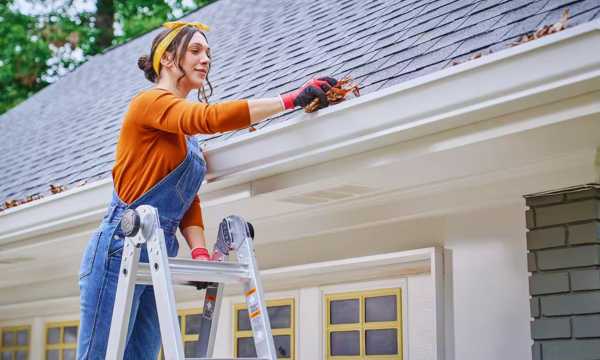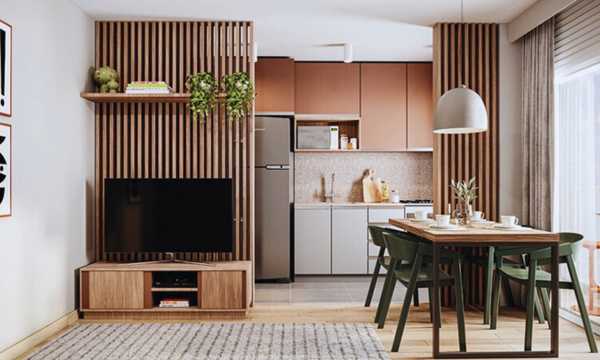A new coat of paint can change the look of your home, making it more beautiful and welcoming.
Anúncios
You can hire a professional to paint your home, but many people choose to take on the task themselves.
If you want to do it yourself, here are some tips and tricks to help you achieve a successful and satisfying painting job.
Anúncios
Keep reading for more details!
1. Prepare the Surface:
Before opening the paint can, make sure the surface is ready. First, clean the walls thoroughly to remove all dust, dirt, and grease.
Anúncios
Use putty to repair any holes or cracks and sand the surface to make it smooth before painting.
Properly preparing the surface not only makes the paint look better but also ensures that the paint adheres better and lasts longer.
2. Choose the Right Paint:
Choosing the right paint is an important part of any DIY job. When choosing a paint, consider the purpose of the room and how much traffic it will have.
For areas that see heavy use, such as hallways and kitchens, choose a paint that will last long and is easy to clean. Be sure to pay attention to the finish.
Matte finishes hide imperfections better, but glossy finishes are easier to clean. Before you start painting, make sure that the paint has worked properly on the surface.
3. Spend Money on Good Tools:
When you paint, having the right tools can make a big difference in the outcome. Invest in good-quality masking tape, brushes, and rollers.
A good brush makes the job easier, and a good painter’s tape allows you to create clean, sharp lines. If you need to paint a large area, a paint sprayer can save you time and achieve a smooth surface.
4. Keep Floors and Furniture Safe:
Accidents happen if you do it yourself, and paint can be spilled. Before you start painting, move furniture out of the room or cover them with plastic sheeting.
Cover the floor with a cloth or plastic sheet to prevent it from accidentally getting wet. If you follow these steps, you won’t have to deal with the hassle of cleaning up paint spills in the future.
5. Test Paint Colors:
Choosing the right paint color can be difficult and the colors in the test may look different on your walls. Test a small area or make a sample board before choosing a color.
This will help you understand how the color will match other things in the room and how it will look in different types of light.
Many paint stores have small containers that can be used for this purpose.
6. Use Primer Wisely:
Primer is an important step that is often skipped, especially when dealing with a new surface or a major color change.
Primer makes paint adhere more easily, evens the finish, and prevents stains from showing. A little extra step can make a big difference in how good your paint job looks and lasts.
7. Paint when Conditions are Right:
To get the best results when painting, you need to be in the right environment. Do not paint when it is very hot or very cold as this will change the drying time and overall appearance of the paint.
Choose times when air circulates in the room and use fans to assist with ventilation if possible. Also, take the humidity into account.
High humidity can make the paint take longer to dry and cause problems with adhesion to the surface.
8. Switch-on Type:
To ensure your edges look clean and professional, you need to master cutting techniques. Before using the roller, carefully paint around edges, corners, and edges with a good-quality pointed brush.
Take your time and cover the areas with masking tape if necessary. A steady hand and patience are important if you want to achieve good results.
9. Work from Top to Bottom:
When painting a room, start at the top and work your way down. This helps prevent drips or spills from the newly painted area.
Start with the ceiling, then the walls, and finally the cladding. When you use this method, you can catch any drips or mistakes, making the process smoother and faster.
10. Multiple Coats for Durability:
It may be tempting to apply just one coat to get the job done quickly, but the key to a long-lasting finish is to use multiple thin coats.
Thin layers dry faster, adhere better, and are less likely to leave drips or lines. For best results, wait between coats and adhere to the drying time stated on the paint can.
11. How to Clean Up Properly:
Don’t be in a rush to put everything back together after you’re done painting. Allow the paint to dry completely before putting the furniture back in the room.
Clean your brushes and rollers thoroughly with a cleaning agent that is suitable for the type of paint you are using.
If you clean your tools properly, you can use them again and again and always get professional results.
12. Final Touches:
After the paint dries, inspect the wall to see if there are any imperfections or missed spots. Fix whatever is needed and then slowly remove the painter’s tape to reveal clean lines.
Take pride in your DIY work and take a moment to see how it changes everything.
Conclusion
If you plan and pay close attention to details, painting your house can be a fun and rewarding job. You can get results that appear to be the work of a professional by using these tips and tricks.
This will not only make your home look better, but it will also make you feel better about what you are doing.
Remember, the key to a great DIY painting project is patience and good planning.
FAQs
1. Why is it important to prepare the surface before painting?
Surface preparation is important because it ensures that the paint has a clean surface to adhere to and gives the paint a more professional look.
Cleaning, blocking and sanding can make the surface smoother, making the paint last longer.
2. How do you choose the right paint for your DIY job?
Think about the purpose and use of the room. For areas that are frequently used, choose a paint that is durable and cleanable. Finishes matter.
Matte finishes hide imperfections, while glossy finishes are easier to clean. Make sure the paint works well on the surface you are using it on.
3. What tools do I need to draw something myself?
Spend the money on good painter’s tape, rollers, and brushes. When you use good tools, your work will go smoother and your lines will be better.
A paint sprayer saves time and provides a smooth surface for large areas.
4. How do you keep floors and chairs safe while painting?
Discard furniture in the room or cover it with plastic sheeting. Use rags or plastic sheeting to protect floors from paint spills and drips.
Following these steps will make cleanup easier and keep your belongings safe.
5. How do you try paint colors before choosing one?
Test it on a small area or make a practice board before choosing a color. This allows you to see how the color will look in different types of light and ensure it matches everything else in the room.
6. Should I use a primer? If necessary, when should it be used?
Primer is very important, especially for new surfaces or major color changes. It ensures that the paint adheres better, levels the surface, and prevents stains.
Use a primer for a more professional, long-lasting look.


